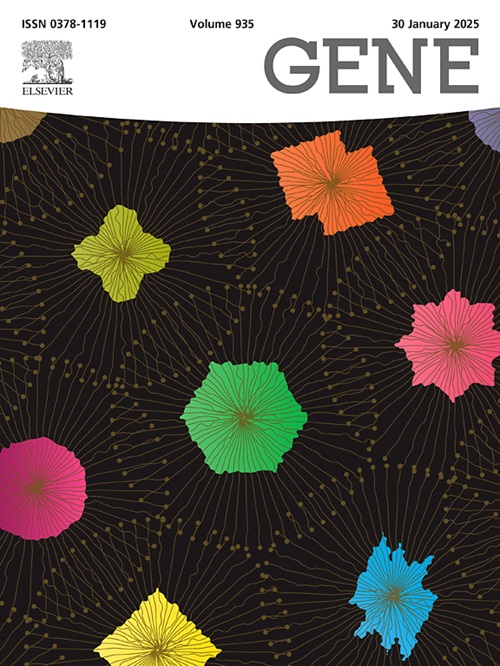Genome-wide analyses of Ariadne family genes reveal their involvement in abiotic stress responses in apple
IF 2.4
3区 生物学
Q2 GENETICS & HEREDITY
引用次数: 0
Abstract
E3 ligases are essential for ubiquitination and play a role in regulating various aspects of eukaryotic life. Ariadne (ARI) proteins, a subfamily of RBR (RING-between-RING) proteins, have been recognized as a new class of RING-finger E3 ligases. Recent research has shed light on their potential involvement in plants’ responses to abiotic stress. However, comprehensive studies on ARI genes in apple (Malus domestica) are still lacking. This study identified ten MdARI genes in the apple genome, and examined intraspecific and interspecific collinearity to explore the evolutionary relationships of ARI family members. Phylogenetic analyses classified MdARIs into two subfamilies (A and B), and by integrating gene structure, conserved motifs, and sequence comparison results, subfamily B was further divided into two subgroups (I and II). Tissue expression analyses revealed varied expression patterns of MdARI genes in different tissues, and subcellular localization showed that MdARI1-1, MdARI1-2, and MdARI9-1 were located in the nucleus, while the other seven MdARIs were distributed throughout the cell. Analyses of promoter cis-elements and expression patterns under cold, salt, and drought treatments indicated the involvement of MdARIs in abiotic stress responses. Several proteins crucial to the plant stress response were predicted to be potential MdARIs-interacting proteins based on the protein interaction network. Additionally, the interaction between UBC11 (E2) and MdARI7-2 was confirmed by a yeast two-hybrid (Y2H) experiment, suggesting that MdARI7-2 may function as an E3. These findings will greatly benefit future research on the role and mechanisms of ARI proteins in apple stress response.
对阿里阿德涅家族基因的全基因组分析表明,它们参与了苹果的非生物胁迫反应。
E3 连接酶对泛素化至关重要,在调节真核生物生命的各个方面发挥着作用。阿里阿德恩(ARI)蛋白是 RBR(RING-between-RING)蛋白的一个亚家族,已被认为是一类新的 RING 手指 E3 连接酶。最近的研究揭示了它们可能参与植物对非生物胁迫的响应。然而,关于苹果(Malus domestica)中 ARI 基因的全面研究仍然缺乏。本研究确定了苹果基因组中的 10 个 MdARI 基因,并研究了种内和种间的共线性,以探索 ARI 家族成员的进化关系。系统进化分析将MdARIs分为两个亚家族(A和B),并通过整合基因结构、保守基序和序列比较结果,将B亚家族进一步分为两个亚群(I和II)。组织表达分析显示 MdARI 基因在不同组织中的表达模式各不相同,亚细胞定位显示 MdARI1-1、MdARI1-2 和 MdARI9-1 位于细胞核中,而其他七个 MdARI 分布在整个细胞中。对启动子顺式元件以及冷、盐和干旱处理下表达模式的分析表明,MdARIs参与了非生物胁迫响应。根据蛋白质相互作用网络,一些对植物胁迫响应至关重要的蛋白质被预测为潜在的 MdARIs 相互作用蛋白。此外,酵母双杂交(Y2H)实验证实了 UBC11(E2)和 MdARI7-2 之间的相互作用,表明 MdARI7-2 可能具有 E3 的功能。这些发现将对今后研究 ARI 蛋白在苹果胁迫响应中的作用和机制大有裨益。
本文章由计算机程序翻译,如有差异,请以英文原文为准。
求助全文
约1分钟内获得全文
求助全文
来源期刊

Gene
生物-遗传学
CiteScore
6.10
自引率
2.90%
发文量
718
审稿时长
42 days
期刊介绍:
Gene publishes papers that focus on the regulation, expression, function and evolution of genes in all biological contexts, including all prokaryotic and eukaryotic organisms, as well as viruses.
 求助内容:
求助内容: 应助结果提醒方式:
应助结果提醒方式:


